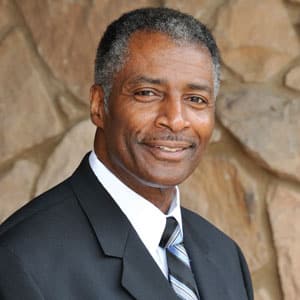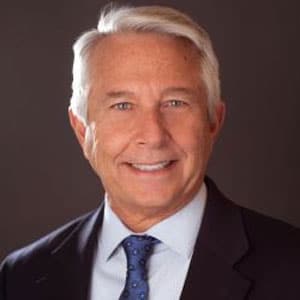What do you see as the biggest driver of change for the aviation industry in terms of parking and mobility?

Walt Gray
Director of Parking and Ground Transportation
Houston Airports

With the growth of app-based mobility services, there is a larger demand for curb space at airports. With the linear feet of curbs fixed at most airports, the increased pressure on curbs by app-based services is changing traditional curb management practices at airports. We are seeing a need to relocate certain mobility services away from the curb and put them in a parking garage or different airport facility, and the need to incorporate technology to better manage the flow of traffic to the curb. I see airports needing to put greater thought into how their curbs are priced and how to monetize non-revenue activities on the curbs. Proper curb pricing can reduce pressure there, moving activities off the curb and into paid parking.”

Allen Corry, CAPP
Assistant VP, Parking & Transportation Business Unit
DFW International Airport

The use of electric shuttle buses promotes the development and use of zero-emission of airport ground transportation to achieve the emission reduction strategies the airport’s Mobile Source Strategy, State Implementation Plan, and Sustainable Freight Action Plan. These electric buses provide a more enjoyable and quieter ride when transporting passengers to and from the parking lots on fixed, short routes to the terminals while providing zero-emissions and reduced air pollution in accordance with local government air pollutions plans. The operational characteristics of shuttle buses are well matched to today’s electric vehicle technology and increased parking charging stations in the parking garages and lots.”

Katherine Beaty
VP of Implementation
TEZ Technology

I think the LPR and A.I. technology is changing how parking is managed at airports as it provides an equipment light option not only as a revenue control system but can be used in nesting programs for designated areas for things like ride share zones, car rental areas, taxi zones and employee parking.”

Robert McConnell, PE, SE
Vice President, Parking Solutions
WGI, Inc.

Air travel has rebounded from its COVID low to about 75% of the late 2019 demand, but business travel, which traditionally makes up about 12% of the total number of trips and about double that share of revenues, is still far below 2019 levels. Similarly, TNC ridesharing is also well below its peak due to lower demand and driver shortages. The pandemic showed us that we can effectively collaborate remotely and virtually, which has and will continue to cut into business air travel for the foreseeable future.”

Casey Jones, CAPP, PMP
Director, Customer Success
FLASH Parking

Aviation is experiencing a dramatic industry-wide shift as it flexes to adapt to pandemic impacts. Airports must fully automate, digitize and be more agile. From the consumer perspective, Business travel, once the market staple, has been slow to rebound while leisure travelers show pent up demand necessitating holistic shifts in marketing campaigns with an eye towards experience over the functional logistics needs of the business audience.”

Matthew Sherwood
Commercial Parking Revenue Strategy Program Manager
Metropolitan Washington Airport Authority

With the emergence of TNCs, airports have had to reimagine their parking offerings. Many airports have launched online reservation systems enabling pricing flexibility and resulting in a more predictable and convenient customer experience. It is critical that we continue to be innovative and take a customer-centric approach to meet the expectations of today’s passengers.”re priced and how to monetize non-revenue activities on the curbs. Proper curb pricing can reduce pressure there, moving activities off the curb and into paid parking.”

Mark Lyons, CAPP
Manager
City of Sarasota, Florida

The biggest driver is the ever-changing flight schedules along with an increase of accessibility into smaller markets. Both require nimbler management teams, more creative solutions to recruiting and developing strong local managers.”

Erik Nelson, PICP
Director of Operations Technology Consulting
Walker Consultants

Although the aviation industry is still coping with the tepid post-COVID recovery in business travel, I see the biggest drivers of change in terms of parking and mobility as increased use of technology to manage the parking and mobility experience. Beyond vast parking structures and the latest PARCS, APGS and vehicle charging systems, Airports are using technology more than ever to manage the flow of patrons in and out of the airport through curb management programs, TNC/ground transportation management, and further integration with transit.”

Jim Anderson
Market Development Manager, Building Solutions Team
MBCC Group

The advent and use of transportation network companies (TNC’s). They are an increasing popular and efficient mode of transportation and airport operations management is recognizing its impact on various parking and mobility revenue generators.” manage the flow of traffic to the curb. I see airports needing to put greater thought into how their curbs are priced and how to monetize non-revenue activities on the curbs. Proper curb pricing can reduce pressure there, moving activities off the curb and into paid parking.”
Gave a question? Send it to editor@parking-mobility.org and watch this space for answers from the experts.
The opinions and thoughts expressed by the contributors do not necessarily reflect the opinions and viewpoints of the International Parking & Mobility Institute or the official policies of IPMI.




